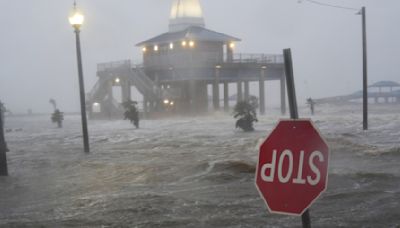Search results
Category 5 status
- Rapid intensification culminated late on September 18, with Maria achieving Category 5 status just 15 mi (25 km) east-southeast of Dominica.
en.wikipedia.org › wiki › Meteorological_history_of_Hurricane_Maria
People also ask
Where did Hurricane Maria hit?
Did Hurricane Maria damage the beach?
How strong was Hurricane Maria in Puerto Rico?
Is Puerto Rico a Category 4 hurricane?
Hurricane Maria was a deadly Category 5 hurricane that devastated the northeastern Caribbean in September 2017, particularly in the U.S. territory of Puerto Rico, which accounted for 2,975 of the 3,059 deaths.
Aug 1, 2018 · Hurricane María made landfall in Puerto Rico on September 20, 2017. The storm had already caused widespread destruction in Dominica as a Category 5 storm, and it alternated between Category 4 and 5 as it approached Puerto Rico.
The Storms. In September 2017, Puerto Rico was struck by two major hurricanes in quick succession. Hurricane Irma—a category 5 storm—passed close to the main island of Puerto Rico on September 7, 2017, leading to widespread power outages and water service interruptions for several days.
- Sept. 16
- Sept. 17-18
- Sept. 19-20
- Sept. 21-23
- Sept. 24-27
- Sept. 28-30
Maria was born from a disturbance off the west coast of Africa on Sept. 12. On Sept. 16, the disturbance organized enough to become a tropical depressionabout 600 nautical miles east of Barbados. It was named Tropical Storm Maria that same day.
Maria rapidly intensified, becoming a hurricane by the afternoon of Sept. 17, a major hurricane by mid-morning on Sept. 18, and a Category 5 hurricane with maximum sustained winds of 160 mph that evening. Keeping this intensity, Maria made landfall in Dominica shortly before midnight.
Dominica’s mountainous landscape weakened Maria to a high-end Category 4, but in the pre-dawn hours of Sept. 19, the storm regained Category 5 strength, this time with maximum sustained winds of 173 mph—the storm’s peak intensity. After passing within 30 miles of St. Croix in the U.S. Virgin Islands, a slightly weakened Maria—which downgraded to a ...
On Sept. 21, hours after exiting Puerto Rico, Maria re-intensified yet again, this time to a Category 3. Maria’s center passed 30 to 40 nautical miles east of the Turks and Caicos Islands on Sept. 22.
Maria remained a major hurricane until Sept. 24, when it downgraded to a strong Category 2 storm. It weakened to a Category 1 later that night. Over the next few days, the storm tracked parallel to the U.S. coastline, continuing to gradually weaken. It came within 150 miles of Cape Hatteras, North Carolina, on Sept. 27, bringing tropical-storm-forc...
On Sept. 28, Maria took a sharp turn eastward out into the open Atlantic, where it weakened to a tropical storm. On the morning of Sept. 30, Maria became post-tropical. It dissipated while over the north Atlantic, about 400 nautical miles southwest of Ireland.
Sep 20, 2017 · Maria’s first landfall was in Dominica, part of the Windward Islands, as a category 5 hurricane at around 915 PM AST on the 18th (0115 UTC on the 19th). Maria maintained Category 5 strength as it continued its path towards the U.S. Virgin Islands and Puerto Rico.
Maria was a very severe Cape Verde Hurricane that ravaged the island of Dominica at category 5 (on the Saffir-Simpson Hurricane Wind Scale) intensity, and later devastated Puerto Rico as a high-end category 4 hurricane.

